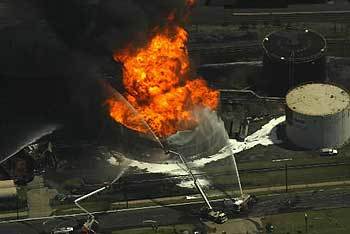Hi, we were designing a 5km gas oil pipeline from jetty to storage tank, while Client just challenged what resources are being considered to fight a possible fire along the pipeline route. This is interesting question but really challenge me: active firefighting was never considered for pipeline that was buried in soil, any potential leakage will be properly monitored and fire is difficultly happened.
However, when the pipeline is really fired, the only passive way I can remind is calling 911 for firefighting, fortunately this pipeline is not far from municipal fire station.
Can anybody instruct me how I can answer this question from client? Is there any code or regulation specified for pipeline firefighting in NFPA, ASME, ISO, etc?
Thanks guy!
However, when the pipeline is really fired, the only passive way I can remind is calling 911 for firefighting, fortunately this pipeline is not far from municipal fire station.
Can anybody instruct me how I can answer this question from client? Is there any code or regulation specified for pipeline firefighting in NFPA, ASME, ISO, etc?
Thanks guy!

